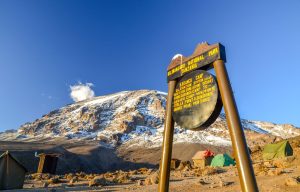Understanding Kilimanjaro Hike Elevation Gain
The Importance of Understanding Kilimanjaro Hike Elevation
When embarking on the journey to summit Mount Kilimanjaro, one of the most important factors to consider is the elevation gain throughout the trek. At a towering height of 5,895 meters (19,341 feet), Kilimanjaro is the highest peak in Africa and presents a unique challenge to hikers due to its steep elevation gain. Understanding and preparing for the changes in altitude is crucial to ensure a safe and successful climb.
As you ascend Kilimanjaro, the elevation gain becomes more significant, leading to a decrease in oxygen levels in the air. This decrease in oxygen can result in altitude sickness, which can range from mild symptoms like headaches and fatigue to more severe conditions like high altitude pulmonary edema (HAPE) or high altitude cerebral edema (HACE). Therefore, it is essential to acclimatize properly and be aware of the signs of altitude sickness to prevent any potential dangers during the hike.
How to Prepare for the Elevation Gain on Kilimanjaro
Before setting off on your Kilimanjaro hike, it is important to prepare both physically and mentally for the elevation gain you will encounter. Here are some tips to help you get ready for the challenge:
-
Physical Conditioning: To tackle the elevation gain on Kilimanjaro, it is essential to be in good physical shape. Regular cardiovascular exercise like hiking, running, or cycling can help improve your endurance and lung capacity, making it easier to cope with the reduced oxygen levels at higher altitudes.
-
Hydration and Nutrition: Proper hydration and nutrition are key to managing the effects of high altitude on your body. Drink plenty of water throughout the hike to stay hydrated and fuel your body with nutritious meals to maintain your energy levels.
-
Acclimatization: As you make your way up Kilimanjaro, take the time to acclimatize properly at each campsite. This involves ascending slowly, allowing your body to adjust to the changing altitude. Listen to your guides and pay attention to any signs of altitude sickness to ensure a safe climb.
-
Altitude Training: If possible, consider incorporating altitude training into your preparation. This can help your body adapt to the reduced oxygen levels you will encounter on Kilimanjaro, making the hike more manageable.
-
Booking with Sunset Africa Safari: To ensure a safe and well-organized Kilimanjaro hike, consider booking your tour with Sunset Africa Safari. With experienced guides and a focus on safety, Sunset Africa Safari can provide you with the support and expertise needed to conquer the elevation gain on Kilimanjaro. For booking requests, please contact info@sunsetafricasafari.com.
By understanding and preparing for the elevation gain on Kilimanjaro, you can increase your chances of reaching the summit successfully while staying safe and enjoying the breathtaking views along the way. With the right training, mindset, and support, you can conquer the challenge of Kilimanjaro and create memories that will last a lifetime.


